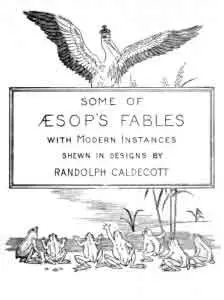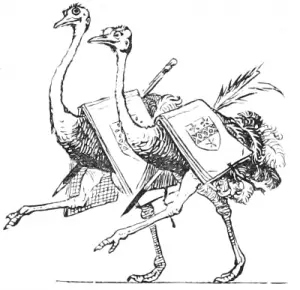
The Caldecott book contains twenty fables along with a significant number of illustrations. The icon used to denote these translations is shown on the right.
The full title is…
|
Some of Aesop’s Fables by Randolph Caldecott London Macmillan and Co. Printed by R. & R. Clark, Edinburgh |
The twenty fables illustrated in this book include…
Index
Each illustrated fable has four designs to go with it; these are arranged as two on top and two on the bottom of the text similar to how the arrangement is in the book (the book is linear; illustrations here are side by side). He goes on to say in the notes…
Sixteen of these Twenty Fables have been handed down to us in a Greek form: for these Halm’s text has been used. As to the other four—Number IX. is from Phaedrus, and retains a flavour of artificiality; Numbers XIII. and XX. are from Latin versions; and Number X. is from a French one.
The Translations aim at replacing the florid style of our older English versions, and the stilted harshness of more modern ones, by a plainness and terseness more nearly like the character of the originals.
In the following cases the Translations have been adapted to the Designs. In Number I. cheese has been put for meat; in Number VIII. a pack of Hounds for a Lion; in Number XI. a Stork for a Crane; in Number XIX. a Frog for a Toad; and in Number VII. the Dog should be tied up. The reason of this is, that in the collaboration the Designer and Translator have not been on terms of equal authority; the former has stood unshakeably by English tradition, and has had his own way.

